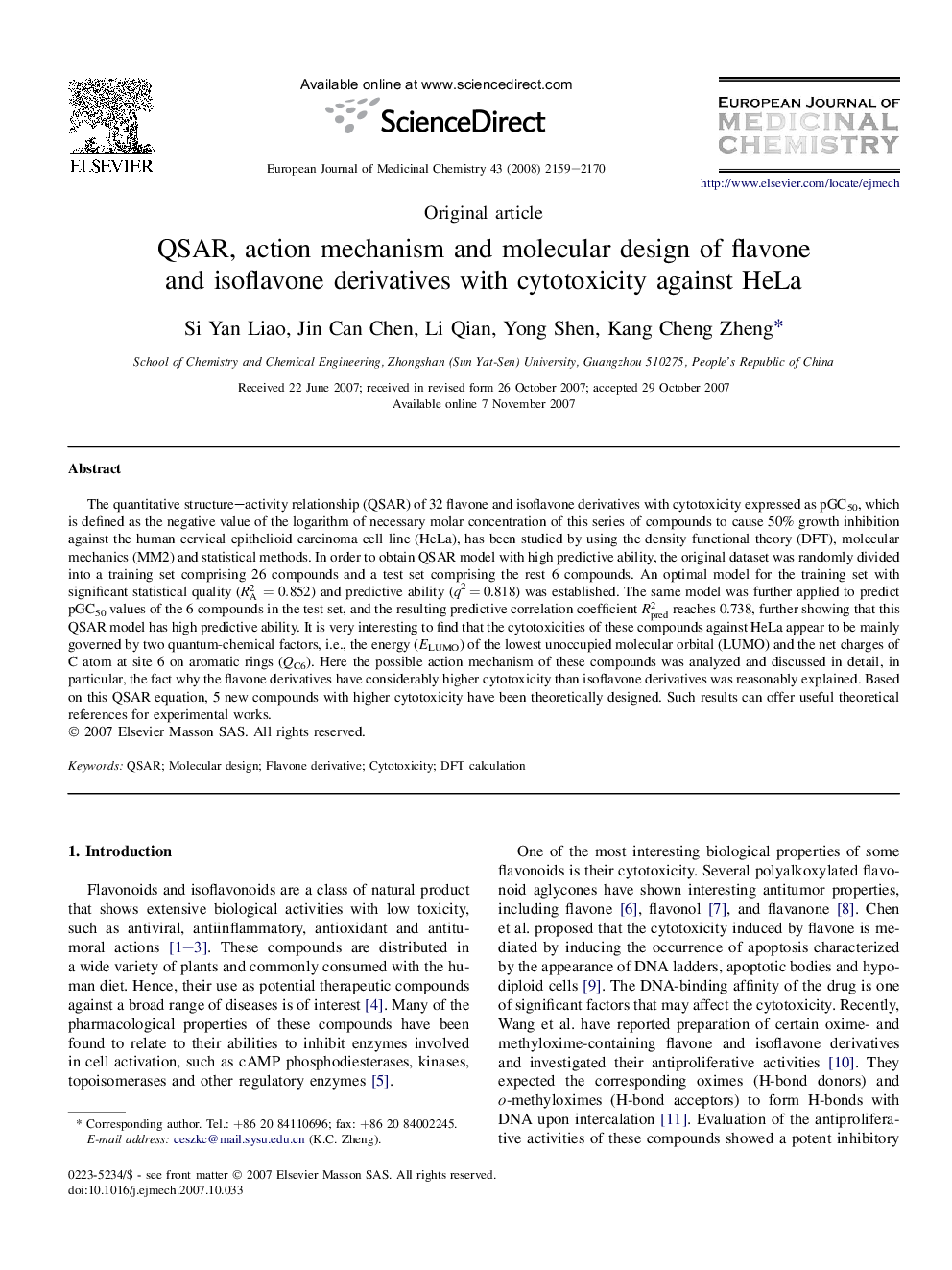| Article ID | Journal | Published Year | Pages | File Type |
|---|---|---|---|---|
| 1393368 | European Journal of Medicinal Chemistry | 2008 | 12 Pages |
The quantitative structure–activity relationship (QSAR) of 32 flavone and isoflavone derivatives with cytotoxicity expressed as pGC50, which is defined as the negative value of the logarithm of necessary molar concentration of this series of compounds to cause 50% growth inhibition against the human cervical epithelioid carcinoma cell line (HeLa), has been studied by using the density functional theory (DFT), molecular mechanics (MM2) and statistical methods. In order to obtain QSAR model with high predictive ability, the original dataset was randomly divided into a training set comprising 26 compounds and a test set comprising the rest 6 compounds. An optimal model for the training set with significant statistical quality (RA2=0.852) and predictive ability (q2 = 0.818) was established. The same model was further applied to predict pGC50 values of the 6 compounds in the test set, and the resulting predictive correlation coefficient Rpred2 reaches 0.738, further showing that this QSAR model has high predictive ability. It is very interesting to find that the cytotoxicities of these compounds against HeLa appear to be mainly governed by two quantum-chemical factors, i.e., the energy (ELUMO) of the lowest unoccupied molecular orbital (LUMO) and the net charges of C atom at site 6 on aromatic rings (QC6). Here the possible action mechanism of these compounds was analyzed and discussed in detail, in particular, the fact why the flavone derivatives have considerably higher cytotoxicity than isoflavone derivatives was reasonably explained. Based on this QSAR equation, 5 new compounds with higher cytotoxicity have been theoretically designed. Such results can offer useful theoretical references for experimental works.
Graphical abstractA QSAR of flavone and isoflavone derivatives with cytotoxicity against HeLa has been studied by using DFT, MM2 and statistical methods. A simple and clear QSAR equation with excellent predictive ability was established. Five new compounds with higher cytotoxicity were theoretically designed. Molecular structures of flavone (A) and isoflavone (B) derivatives.Figure optionsDownload full-size imageDownload as PowerPoint slide
